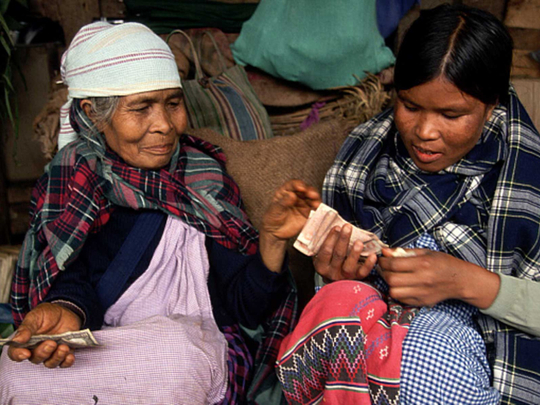
Global remittances by non-resident Indians to India witnessed a sharp surge last year, growing by 6.44 per cent from the previous year to reach $7.18 billion (about Dh26 billion) — the highest since 2008.
World Bank data affirms that India received 10 per cent of global remittances last year and that India and China together now receive more inflows than the next five countries combined.
The emotional factor
Dilip Ratha, Head of the World Bank’s Knowledge Partnership on Migration and Development project, told PTI last month that the Indian remittance phenomenon is statistical, historical and cultural in parts, but largely economic. Indians consistently send more money home because often, their families need it to survive, he said.
Moreover, the Chinese are more likely to remit money for investment, but “as people stay abroad longer, their links with their home country weaken, but this does not apply to India”, said Ratha. Even Indians who have never been to India send money to their relatives there, he added.
India also stays on top because of the staggering diversity of its overseas employees, from construction workers and taxi drivers to senior managers.
According to the World Bank, Tamil Nadu, Kerala and Maharastra received 60 per cent of last year’s inflows. Kerala alone received $2.3 billion, up 10 per cent from 2012. UAE Exchange reported in March that the state had contributed 33 per cent to its outflows to India — the largest share.
Promoth Manghat, Vice-President – Global Operations, UAE Exchange, says, “We remain positive as more jobs are created, especially with World Expo 2020 and Fifa World Cup 2022.”
Increase in investments
According to a survey conducted by the Reserve Bank of India (RBI) in December, 49 per cent of all Indian remittances received are utilised to meet food, education and health requirements of the migrant workers’ families or family maintenance.
In Kerala, the average amount transferred has increased from Rs43,000 (about Dh2,692)-Rs44,000 to Rs46,000-Rs47,000 per transaction. The survey also noted that money was increasingly being channelled into investments, as against family maintenance. In January, Kerala’s Chief Minister Oommen Chandy lauded the contribution of non-resident Keralites towards the state’s development.
Meanwhile, Maharashtra received more than $1 billion last year, up by 12 per cent from 2012 and accounting for 14.26 per cent of total Indian remittances. RBI says that in Mumbai, 45 per cent of total remittances was for family maintenance, while 18 per cent went into bank deposits and property purchases.











